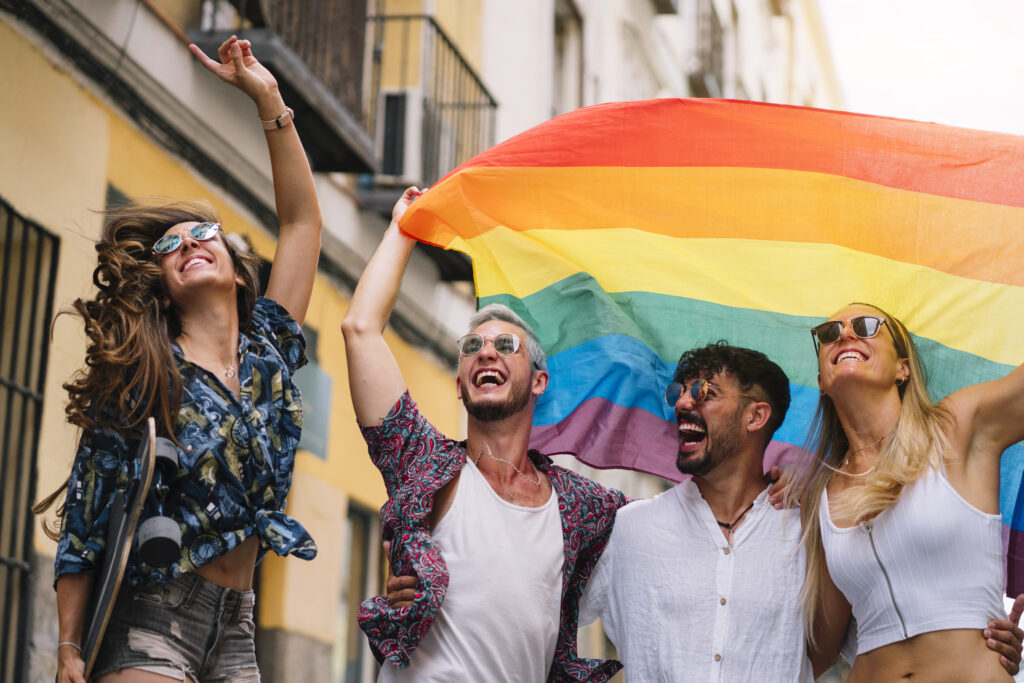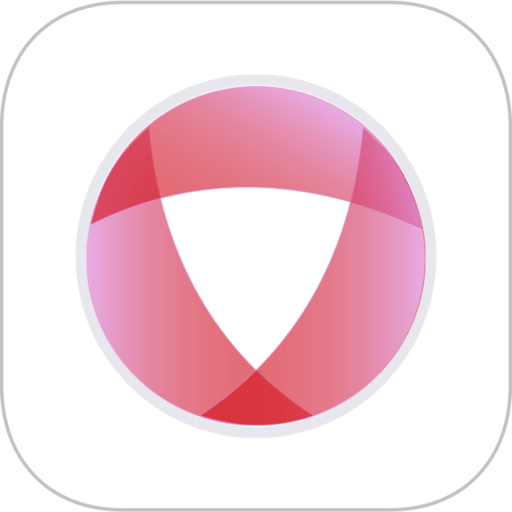21 Most Popular Sexual Orientations In The #open App And How They Are Defined
Whilst certain labels pertaining to sexuality and sexual orientation are at least a decade old, in 2022, with popular shows like Euphoria and Sex Education where sexuality and gender are explored as part of a spectrum, people are becoming more literate in expressing their sexuality. As with the ever expanding vocabulary that is used within ethically non-monogamous communities to describe different ways of relating by design, the language that describes sexuality and sexual orientations is nuanced and evolving.

Sexuality Vs. Sexual Orientation: What’s the Difference?
Sexuality is the way in which our sexual energy, receptivity, preferences and identities are expressed. As you can imagine, there are about as many different ways in which sexuality is expressed as there are human beings! Sexuality is deeply personal, dynamic and ever changing.
Sexual Orientation refers to a person’s identity in relation to the gender or genders to which they are sexually, emotionally, and romantically attracted. The American Psychological Association states that sexual orientation is not a conscious choice and is instead a result of one’s genetics, familial and personal history, and environment. Research over several decades has demonstrated that sexual orientation ranges along a continuum, from little to no sexual attraction to any gender, to exclusive attraction to the opposite gender, to exclusive attraction to the same gender with many preferences between.
According to a poll created by Gallup, the percentage of adults living in the U.S. who self-identify as part of the LGBTQIA+ community (basically as something other than heterosexual) has increased to a new high of 7.1%. That’s double the percentage from 2012, when Gallup first measured it. With over 20% of Gen Z self-identifying as LGBTQI+, it is clear to see that the young adults of today are changing the norms of being more comfortable with fully embracing their gender identities and sexual orientations and feel more free to truly be themselves.
Kit Connor, star of Heartstopper, previously stated that labeling their sexuality isn’t necessary. But recently, the star was forced to come out as bisexual amidst accusations that he was ‘queerbaiting’ –– which signals that, perhaps, our commitment to labels can also be harmful. Still, labels help some people to better understand themselves and to feel a sense of belonging with others who share their identity. Having a label can also make it easier to access support, education, and resources. There are many labels associated with sexuality and sexual orientation, but here are the ones seen most often on the #open app!
What Labels Are People Using In #open?
Androgynosexual – A person who identifies as androgynosexual is attracted to people who are androgynous in appearance, regardless of gender.
Androsexual – someone who is androsexual experiences sexual attraction toward men, males, and/or people who appear to have masculine features, regardless of whether they were assigned male at birth. This sexual orientation could be experienced as the sexual attraction to masculinity over gender.
Asexual – Someone who is asexual – also known as “Ace” – experiences little or no sexual attraction to people of any gender. Asexuality exists on a spectrum, with many different sexual orientations falling under this umbrella such as gray-ace and demisexual.
There are many misconceptions and presumptions about asexuality such as that people are just being abstinent due to previous trauma, because of religious beliefs, because they are unable to find a partner, or because they fear intimacy in general. From an asexual perspective, love does not equal sex, but intimacy is still valued as an important part of life – it just may or may not be expressed sexually.
Autosexual – If someone identifies as autosexual, they are more attracted to themselves than to others and may prefer masturbation to sex with a partner. It doesn’t mean that someone who is autosexual doesn’t have sexual relationships with other people, they may just feel more sexually aroused by themselves.
Bisexual – A person who is bisexual can be attracted to people of more than one gender. Often, bisexual women are hypersexualised and fetishized, whereas bisexual men are erased –– and both are disbelieved. This sexual identity often overlaps with other identities, such as pansexuality and omnisexuality.
Bicurious – Someone who is bicurious might be newly exploring bisexuality/pansexuality or are contemplating their proximity to a bi/pan identity. They may have questions about their sexuality but don’t have definite answers yet –– which is totally normal! It is often seen as a temporary label whilst someone is experimenting what works for them or not, which speaks to how bisexuality and pansexuality are viewed with inherent suspicion. Regardless, the label is useful for describing a particular form of exploration.
Demisexual – Someone who identifies as demisexual falls on the asexual spectrum and only experiences sexual attraction under specific circumstances, such as after taking the time to build a romantic or emotional relationship with a person.
Gray-Ace – Gray-Ace is a label on the spectrum of asexuality where someone might experience sexual attraction on a rare occasion under a particular set of circumstances. Even the spectrum of asexuality isn’t black or white – nor is any form of sexual expression.
Gynosexual – Someone who identifies as gynosexual is attracted to femininity; which can be in the form of a woman, or a person with feminine features regardless of gender assigned at birth.
Fluid – Refers to the dynamic and changeable nature of sexuality, attraction and orientation. Someone who describes themselves as sexually fluid might not have a fixed sexual orientation; the way in which their sexuality is expressed may depend on circumstance.
Heterosexual – Someone who identifies as heterosexual (AKA straight) is sexually or romantically attracted to people of the opposite gender. We live in a heteronormative world, whereby heterosexual relationships are seen as the norm. Any form of sexual orientation outside of this norm can be (and often is) stigmatised and questioned.
Heteroflexible – Someone who is heteroflexible may identify as “mostly straight” (usually attracted to someone of the opposite gender), but can sometimes be sexually attracted to someone of the same gender.
Homosexual – A person who identifies as homosexual (although this term is quite outdated) is sexually or romantically attracted to people of their same gender. Sometimes people might identify as gay or lesbian rather than homosexual.
Homoflexible – Someone who is homoflexible is mostly attracted to people of the same gender, but can occasionally experience sexual attraction to someone of the opposite gender.
READ MORE: Check out our piece on Unicorn Hunting on how to Respectfully welcome a third into your existing relationship!
Objectumsexual – A person who identifies as objectumsexual experiences sexual attraction to inanimate objects. Earlier this year, someone made news for their reported attraction to planes and trains. Objectumsexuality, much like the other sexual orientations on this list, speaks to the expansiveness of labels and sexuality.
Omnisexual – Omnisexual is a label within the category of multisexuality, which includes people who are sexually attracted to more than one gender. Someone who is omnisexual is attracted to people of all genders and any sexual orientation. Can often be mixed up with pansexuality (below), however whilst people who identify as pansexual are attracted to people without noticing their gender, whereas people who identify as omnisexual do take note of gender of people they are attracted to.
Pansexual – Someone who identifies as pansexual can be attratced to any person regardless of their sexual orientation or gender identity. While people who are pansexual and people who are bisexual may be attracted to multiple genders (despite the misconception that bisexual people are only attracted to two genders, or to only men and women), some find that pansexual is an updated and more inclusive term, especially for those who are trans or non-binary.
Polysexual – Polysexual is another word for multisexuality, which is an umbrella term describing sexual orientations where people are attracted to multiple genders. It suggests a greater variety in sexual orientations than exist within the mononormative and heteronormaitve frame of binary thinking.
LEARN MORE: Check out our #openEd episode deconstructing mononormativity with @antimononormative !
Queer – Queer is an umbrella term used within the LGBTQIA+ community (and is what the “Q” stands for) that is used to describe someone who is not strictly heterosexual. It acknowledges the spectrum of sexuality and might describe someone who doesn’t tidily fit into a certain box. Historically “queer” was a derogatory term, but it has been adopted by the LGBTQIA+ community as a positive self-label.
Questioning – Someone who puts a hashtag on the #open app as questioning may be questioning their current sexual orientation and curious about exploring different aspects of sexuality or gender. Perhaps someone has always identified as gay, but is now curious about whether they’re also attracted to women.
Sapiosexual – Someone who identifies as sapiosexual experiences attraction based on the contents of someone’s mind, rather than their sex or gender. This label faces a lot of critique for asserting that someone’s perceived intelligence, which is often the result of class hierarchies and culture, is related to sexual attraction. However, being generally attracted to what’s inside of someone’s mind, and the similar interests and experiences found there, is valid.
Skoliosexual – A person who identifies as skoliosexual is attracted to anyone who isn’t cisgender. This means a skoliosexual will usually find themselves sexually, emotionally, or romantically attracted to people who are trans, genderqueer, or nonbinary. This term is relatively new within the field of sexuality and is often seen as a pejorative due to the fetishization of trans people i.e., skoliosexuals may fetishize trans individuals.
Sexual Orientation in the U.S.
With anti-trans and anti-LGBTQ discriminatory bills proposed all over the United States in 2022, we feel that continued education and the creation of safe spaces online and in person that support all gender identities and sexual orientations are needed now more than ever. That’s why we at #open are committed to serving our community as best we can with such education and safe spaces.
With Atlanta City Council member Lilana Bakhtiari becoming the first queer Muslim person elected in the state of Georgia and the first nonbinary council member of a major U.S. city blazing the trail, and a NY judge recently ruling that people in polyamorous relationships should be granted the same housing rights as monogamous couples, there are still some small but positive steps being taken to support members of the LGBTQIA+ community which we hope will continue.
#open is dedicated, first and foremost, to being inclusive: to accepting people of all gender identities and sexual orientations, from all walks of life, in any sort of relationship that makes you happy, no matter what gets you going. #open is a sex positive space meaning that we replace shame with pleasure and judgement with freedom. Inclusion goes beyond acceptance; it requires that everyone is provided the opportunity to express their unique self. It requires the freedom to share who we are without fear of judgment. It requires that all of us are free to self-identify however we choose.

We’ve created a platform to be authentic and fluid in expressing your sexuality. We have over 60 different gender, sexual orientation, and relationship styles to choose from. If you feel as though none of the options quite encapsulate the unique being that you are, you can always create your own! As stated, some people find labels helpful, whereas others don’t. The great news is that we cater to both!
App users are invited to be authentic and free with their sexual orientation. Know that as your preferences or sexual expression changes, you can update your profile accordingly. Being #open with your sexuality makes the likelihood of finding a compatible match much higher, and the probability of winning whatever dating game you are playing a lot more likely.

